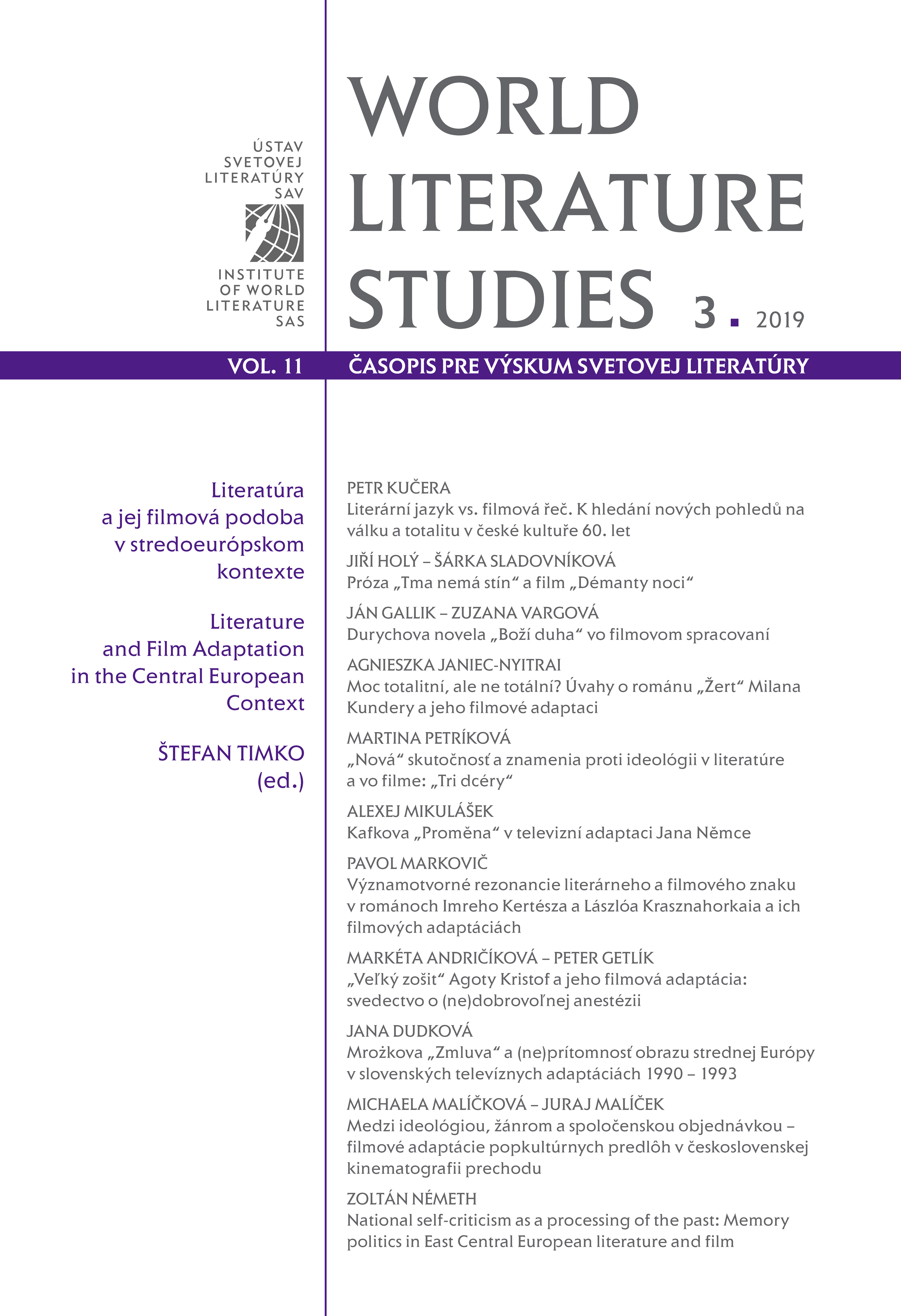
We kindly inform you that, as long as the subject affiliation of our 300.000+ articles is in progress, you might get unsufficient or no results on your third level or second level search. In this case, please broaden your search criteria.

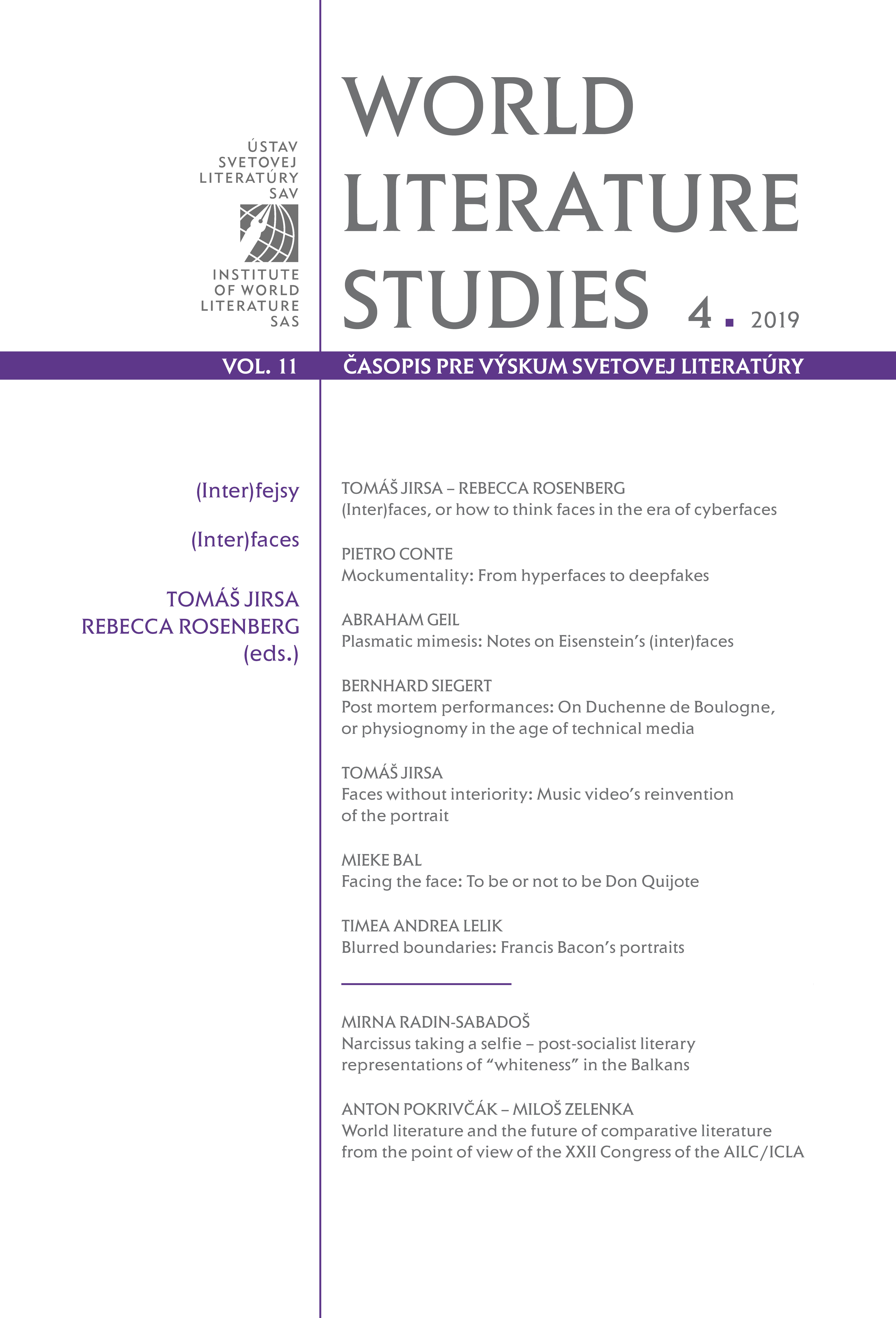

The article presents a “preposterous” updating of Don Quijote, in the face of trauma,contemporary slavery, and the importance of a social face-to-face, or interface, to help people to come out of their isolation inflicted on them by violence. The argument begins with the“updating” of a literary monument, an instance of cultural heritage that never lost its relevance for whatever era in which it functions. The focus on trauma makes this particularly necessary, since those on whom the stagnation and isolation violence cause has been inflicted,must be helped socially. Taking seriously not that but why some people seem “mad” is a collective task for humans. We can all contribute to that remedial interfacing. Through its special complexity, subtlety and temporality, art can facilitate this. The video installation DonQuijote: Sad Countenances presents an attempt to do this. Especially the episode “Who Is Do Quijote” is central in the article. There, some characters discuss the value and possibility of history, the authorship of Cervantes’ novel, and the importance of the literary imagination, while the figure of Don Quijote, in front of a large mirror, exposes himself to an artist-photographer who tries to capture his face.
More...
The study is an analysis of the XXII Congress of the AILC/ICLA Literature of the World and the Future of Comparative Literature which took place between July 29 and August 2, 2019 in Macau. As its name indicates, the lectures and workshops emphasised the concept of “literature of the world”, which is considered less elitist than the traditional, and more homogenous, concept of “world literature”. The idea that the (world) literature cannot be approached only from one cultural or theoretical point of view also permeated the joint Czecho-Slovak issue of the journal World Literature Studies entitled “The Image of Remote Countries in the Literatures of Central and Eastern Europe” published on the occasion of the Congress. Using various literary materials, the issue attempted to discuss modern methodological approaches to intercultural problems from the imagological intercontinental perspective.
More...
GÁFRIK, Róbert: PHILIP LEONARD: Orbital Poetics. Literature, Theory, World. RONDZIKOVÁ, Natália: ANDREA RIZZI – BIRGIT LANG – ANTHONY PYM: What is Translation History? A Trust-Based Approach. CZUCZ, Eniko: MAGDOLNA BALOGH (ed.): Szomszédok a kirakatban: A szlovák irodalomrecepciója Magyarországon 1990 után [Neighbors on Display: The Receptionof Slovak Literature in Hungary after 1990]. KENDERESSY, Eva: MARIA SAAS – ŞTEFAN BAGHIU – VLAD POJOGA (eds.): The Cultureof Translation in Romania/Übersetzungskultur und Literaturübersetzenin Rumänien.
More...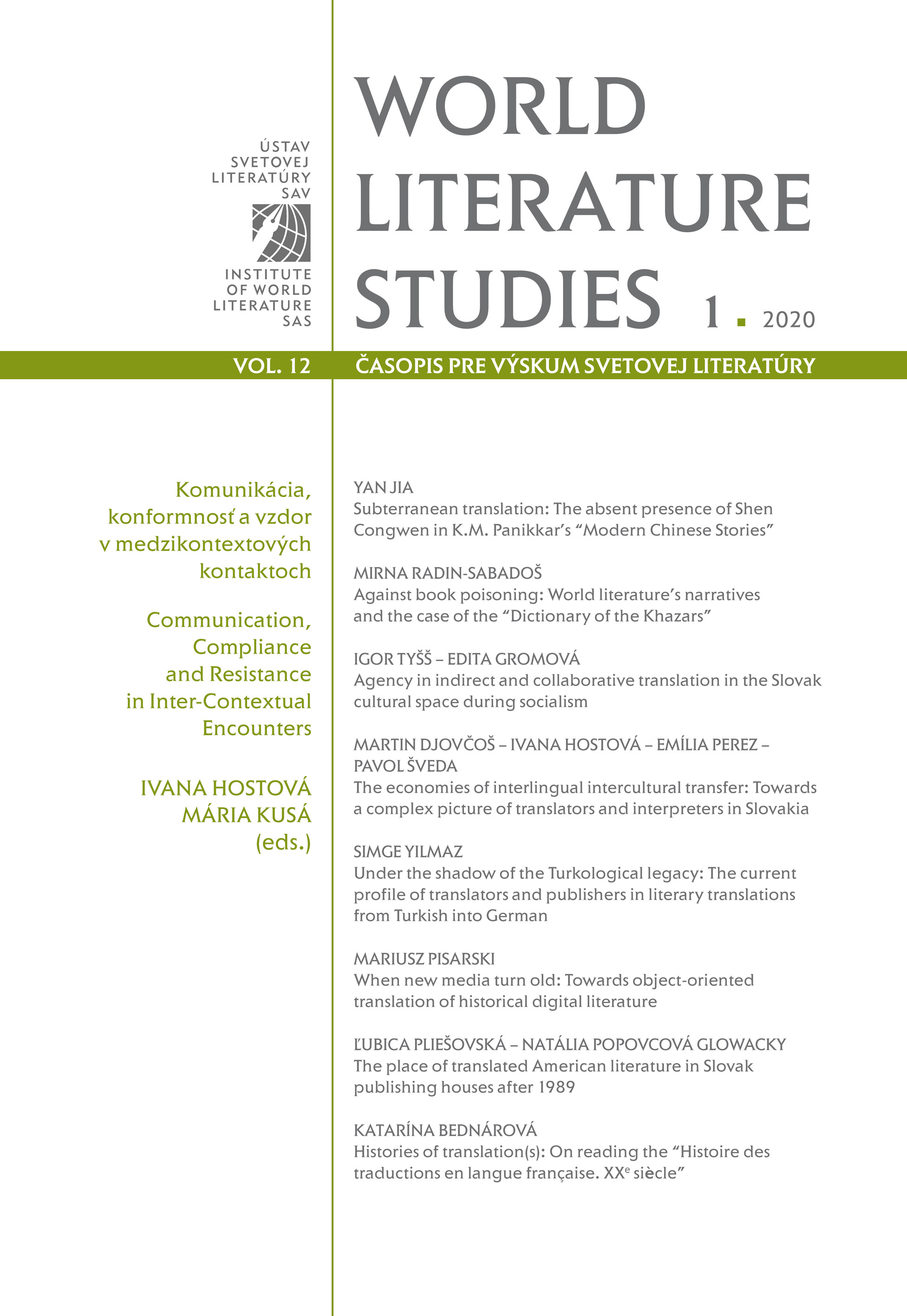
Libuša Vajdová: Antoine Chalvin – Jean-Léon Muller – Katre Talviste – Marie Vrinat-Nikolov (eds): Histoire de la traduction littéraire en Europe médiane. Des origines à 1989 [The History of LiteraryTranslation in Central Europe. From Its Origins to 1989]; Anton Eliáš: Ivana Kupková – Zbyněk Fišer et al.: Jiří Levý: zakladatel československé translatologie [Jiří Levý: The Founder of Czechoslovak Translation Studies]; Matej Laš: Vladimír Biloveský – Ivan Šuša: Banskobystrické myslenie o preklade a tlmočení [Thinkingon Translation and Interpreting in Banská Bystrica]; Edita Gromová: Andrej Zahorák: Intercultural Aspect in Translation and Reception of Precedent Phenomena; Jakub Kapičiak: Gerald Janecek (ed.): Staging the Image: Dmitry Prigov as Artist and Writer
More...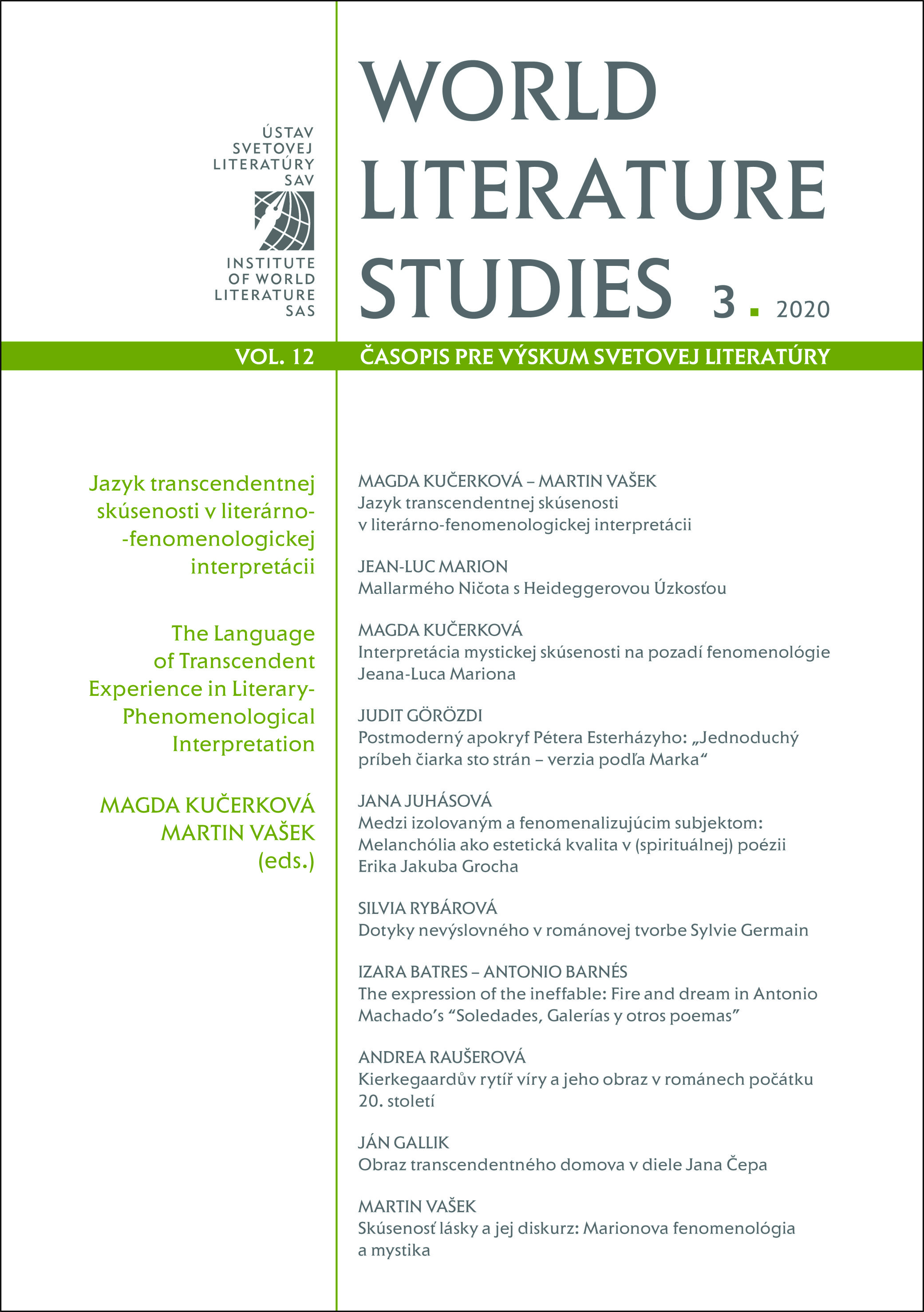
Questions concerning God and creation are constants in the prozaic work of Péter Eszterházy and constitute a topic which the author approaches mainly through the prism of an individual confronted with historical circumstance. This study is a reading of the novel Egyszerűtörténet vessző száz oldal – a Márk-változat (A Simple Story Comma One Hundred Pages – the Mark Version, 2014), which portrays the dark communist 1950’s in Hungary via paraphrasing of the gospel. The concern here is mainly with aspects of the textual expressionof religious experience, which includes philosophical and phenomenological questions about the possibilities of articulation and expression of the individual (emotional) testimony of faith. The analysis looks at perspectives as represented by the two main characters. The one represents silence as the true communicational space for the relationship with the transcendent, the other represents the alternative of a linguistic approach (writing a story about God asimitation, as a ritual mastery, as betrayal). The study approaches the historical circumstances of the narrative as a theodicy, i.e. as an attempt to understand the meaning of the passion story in the broader context of human history.
More...
The Czech writer, essayist and translator Jan Čep (1902–1974), whose work displays his Catholic orientation, is considered to be one of the most original and thoughtful Czech Christian thinkers. This interpretation of selected works by Čep aims to build on existing research, to deepen the views of his artistic language and imagery, and to analyse the means of expression created by the author’ s philosophical-reflexive and meditative lyrism, often alluding to a contemplative position. In a special way, the metaphysical image of the dual home (first homeas a temporary dwelling for earthly existence, which is the image and parable of the second – permanent – home in heaven) emerges from the poetics constituted in this way (based on both artistic and spiritual vision of the world), which thematically reads from Čep’ s transcendent experience. In this analysis, the phenomenological view appears to be an adequate methodological approach alongside literary interpretation.
More...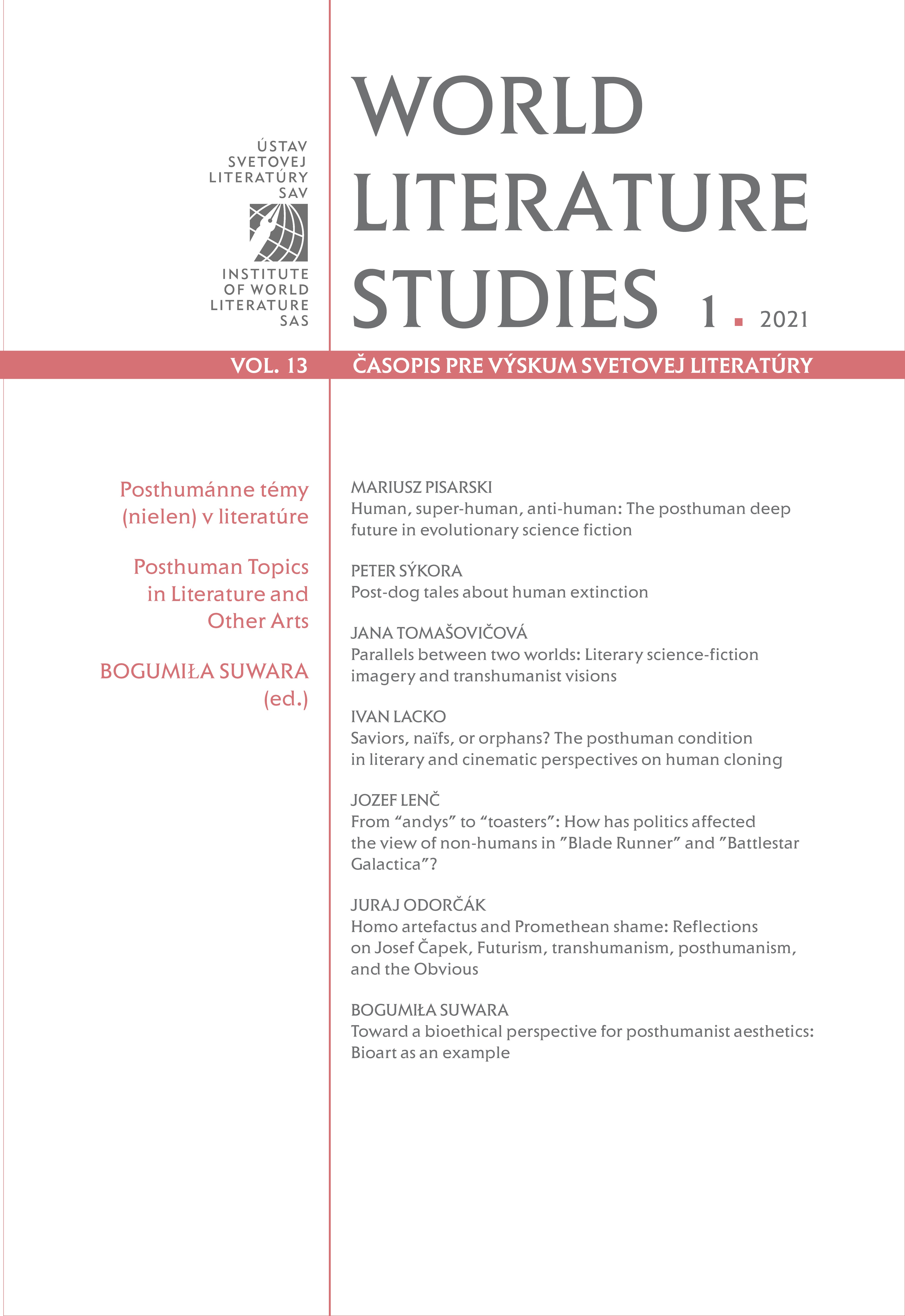
Posthumanist visions of the future do not venture further ahead than a few hundred or a few thousand years at most. It is within this near future that most scenarios of technological singularity and the enhancement of the human into an H+, or a posthuman, are projected. This paper reflects on visions of much more distant futures found in evolutionary speculative fiction and science fiction, from J.B.S. Haldane (1927) through to Adrian Tchaikovsky (2019). From the vantage point of thousands (or millions) of years, the forthcoming era of minduploading, designer babies, and technological immortality as envisioned in the transhumanist utopias of Hans Moravec amount to short episodes in a long cycle of evolutionary progress matched by planetary catastrophes. Such a perspective offers a more general reflectionon the philosophical and cultural implications of a “creative evolution”, the nature of humanity, and humans’ place among other species. The transhumanism agenda, initiated by Julian Huxley in the form of a call to arms for the “betterment of humanity” by existing, emerging, and speculative technologies, does not emerge as a retrograde reinstatement of the compromised ideals of Enlightenment, but rather as the sine qua non for human survival in the face of the heat death of the Sun, the eruption of a super-volcano, and any other existential risk. Human ingenuity, reflected in advanced biotechnology, space travel, technological enhancements turns out to be the only guarantee of life on Earth and beyond it. As such, this comparative study of literary examples of possible courses of human history proves that reflections on the far future are capable of healing current discursive divides between posthumanist and transhumanist, anthropocentric and anti-anthropocentric, and technophobic and technophilic approaches to our present.
More...
The prerequisites for transhumanist visions can be identified on anthropological, social,scientific, and technological levels. But one cannot neglect science-fiction literature, which provides transhumanism with inspiration and literary imagery. This article focuses on three selected motifs in the well-known Foundation series by Isaac Asimov, which discusses in relation to ideas of transhumanism. In the first part, the article highlights the visionary and subversive character of these works and seeks similar traits in transhumanism. The second part discusses big data analysis, which is an important component of literary storytelling and which fuels the development of artificial intelligence, which, according to transhumanists, will lead to the creation of superintelligence. The third motif is the confrontation with beings that possess superhuman abilities, something both Asimov’s work and transhumanist visions deal with and which opens up questions about coexistence with those who are unlike us. Literary and transhumanist visions have multiple parallels and encourage deeper social, ethical, and anthropological analyses of important topics.
More...
This article focuses on cloning as a relevant trans- and posthumanist theme presented in the classical science fiction of the 1970s (Kate Wilhelm’s Where Late the Sweet Birds Sang), 21st-century literary fiction (Kazuo Ishiguro’s Never Let Me Go), and streaming television series made in the 2010s (BBC America’s Orphan Black). With special emphasis on the subject of human cloning, the article will endeavor to discuss questions of identity in a posthuman environment, tracing the development from Wilhelm’s dystopian and post-apocalyptic scenarios in which clones and humans interact to disastrous ends, through Ishiguro’s psychological and emotional exploration of the inner world of cloned individuals whose fates are narrated in a form similar to the Bildungsroman, all the way to the complex study of nature vs. nurture in the cloned characters of Orphan Black.
More...
This article focuses on the change in perception of humanoid androids in science fiction from Philip K. Dick’s cult novel Do Androids Dream of Electric Sheep? (1968) and its later film adaptations, to the depictions of androids and people in the struggle for survival and immortality in the TV series Battlestar Galactica (2004–2009) and Caprica (2010). Science-fiction novels usually outline the author’s ideas about the near or distant future of the world with which they are confronted on a daily basis. They usually warn readers of a possible apocalypse or present models of an ideal future society to replace the society of today. However, science fiction is written by real people in a specific space and time who often reflect the social tensions and issues of the time they were created. The depictions of humanoid androids, their position in society, and their desire to break free from their undignified or even slavish positions are, in many cases, a reflection of real policies and the position of today’s “others” in mainstream society.
More...
This paper is focused on an analysis of Josef Čapek ’s notion of technology and his scrutiny of the conflicting nature of the avant-garde movement of Futurism in relation to the contemporary assumptions of the processual philosophies of transhumanism and posthumanism. The analysis is reconstructed in the narrative setting of the technological and methodological hybridization of the categories of the human and posthuman (Homo artefactus) and is inspired by Josef Čapek’s approach to a specific philosophical question: Why would anyone want to create a posthuman, a “robot Picasso”? It is argued that Josef Čapek projected that some of the motivational assumptions about the creation of posthumans would be built upon the inconsistent stigmatization of the human by humans that envy the hypothetical superiority of posthumans (i.e., Promethean shame).
More...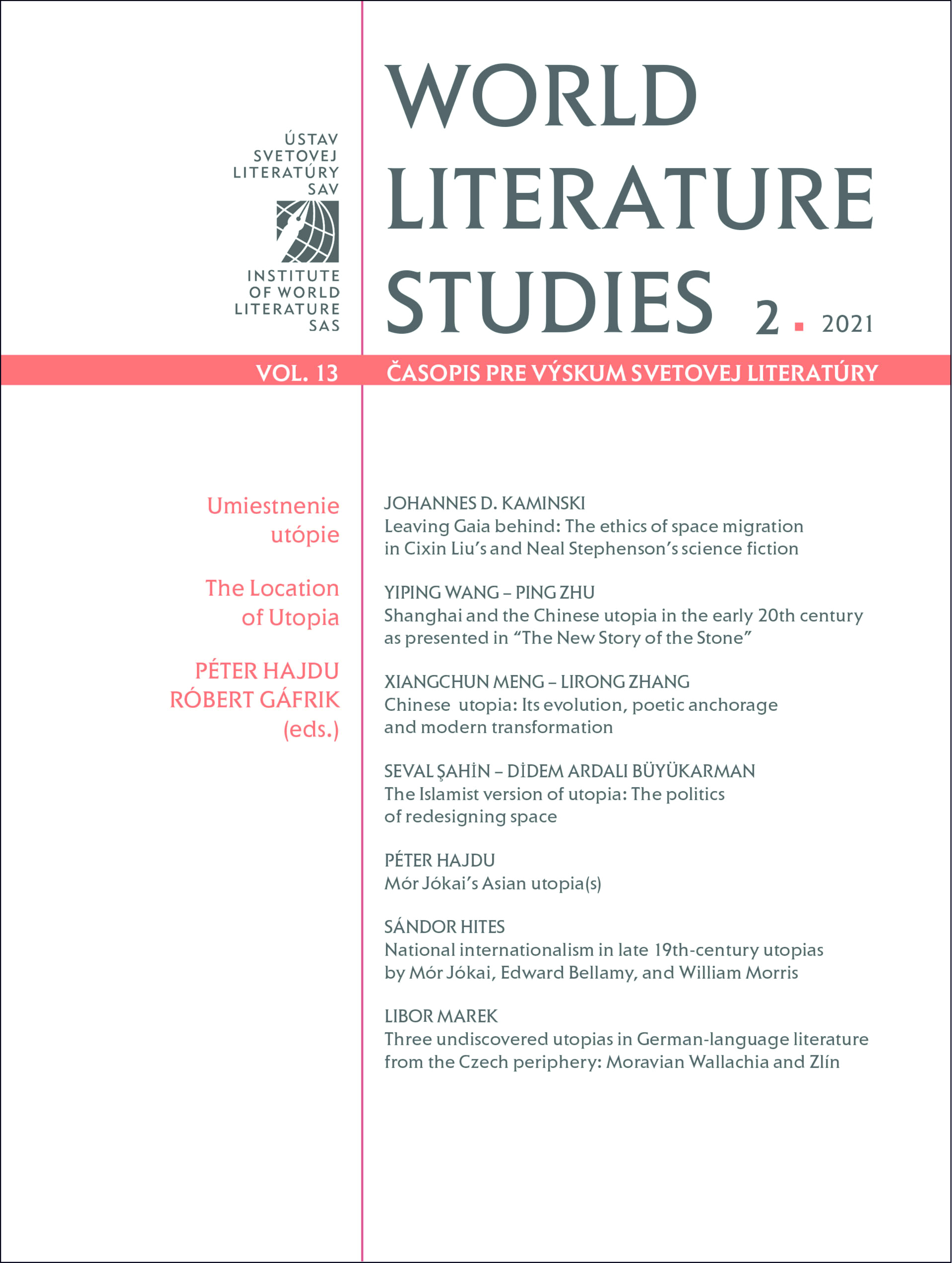
In Cixin Liu’s trilogy Remembrance of Earth’s Past (2008–2010) and Neal Stephenson’s Seveneves (2015), the surface of planet Earth becomes uninhabitable amid global states of emergency, and central governments devise radical plans to ensure the survival of the human species. In contrast to the Old Testament, where human emancipation from nature is punished, Chinese antiquity’s narratives of large-scale engineering projects are surprisingly compatible with the modern mindset which regards nature in utilitarian terms. Contemporary science fiction does not simply inherit this techno-optimistic stance, but fleshes out possible futures that are shaped by biopolitical decisions. In Stephenson’s and Liu’s prose, the proposed escape plans only benefit small segments of the population. While such procedure is incompatible with human rights, which emphasize the value of the individual over the collective, contemporary pragmatic ethics interprets such behavior as rational. Applied to more tangible scenarios, such as our increasingly depleted livelihoods on Earth, both texts document our somewhat diminished expectations regarding the future. In a world where eating human protein is “reasonable” and its rejection merely “respectable”, the preservation of humankind in space sets in motion a return to Hobbes’s “natural state of man”.
More...
The paper looks at two major representatives of fin-de-siècle utopian fiction, Edward Bellamy’s 1888 Looking Backward 2000–1887, William Morris’s 1890 News from Nowhere, and an earlier work by the Hungarian novelist Mór Jókai, The Novel of the Century to Come (A jövőszázad regénye, 1872–1874). I examine their various strategies regarding the spatial and historical aspects of utopian transformation as well as their respective positions toward the relationof commerce and community. On the whole, I suggest that the pattern of nationally informed or biased internationalism that seems to underlie all three novels might be traced back to the enlightened concept of patriotic cosmopolitanism.
More...
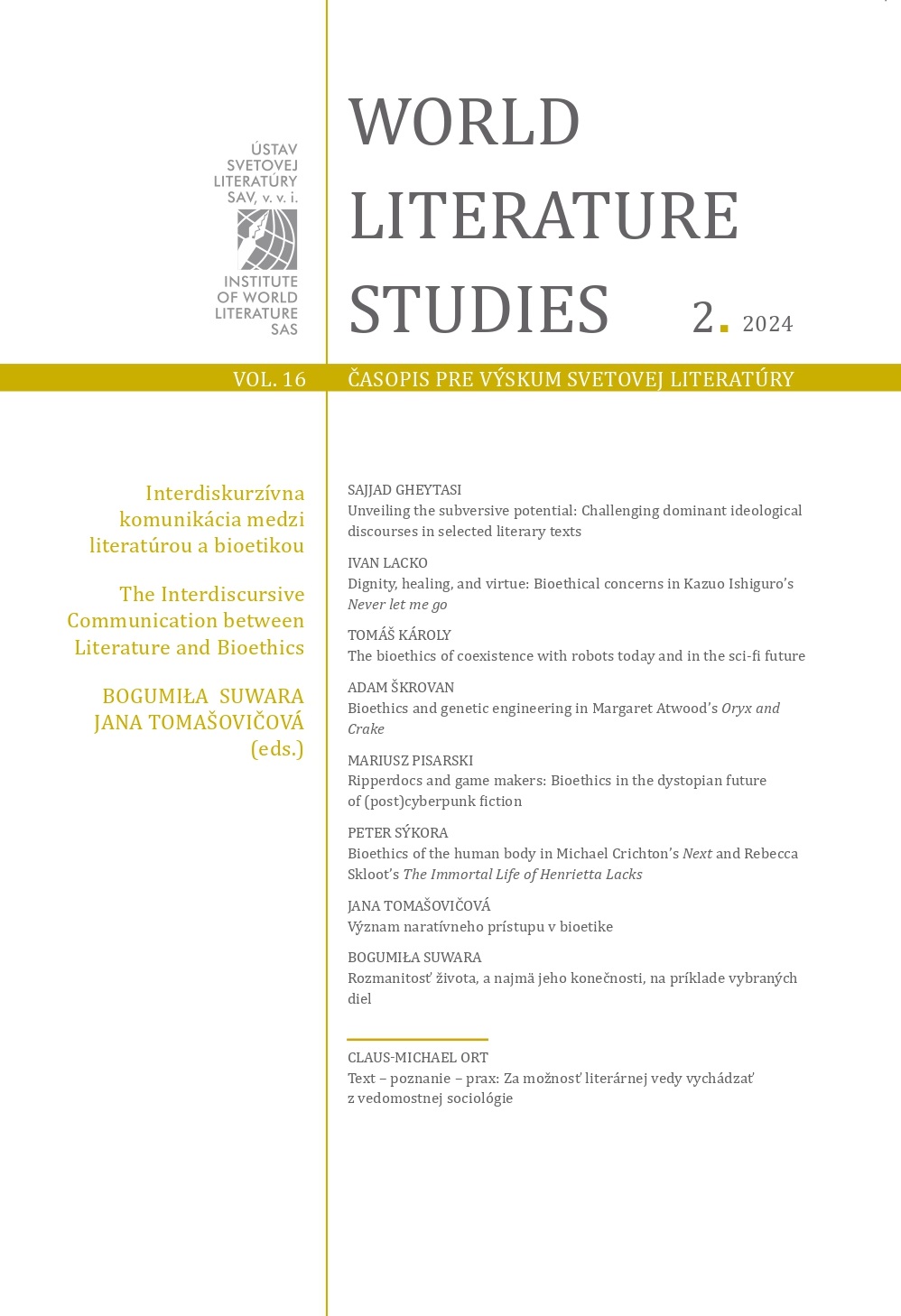
Methodological pluralism is a characteristic feature of contemporary bioethics. Within interdiscursive research, a narrative approach has gradually emerged as part of a broader ethical reflection. This article aims to explore the relevance of the narrative approach in bioethics, where it is gaining a place alongside traditional normative approaches. After first analyzing two initiatives that have influenced the reflection on the inclusion of the narrative method in bioethical discourse, it focuses on an analysis of selected works by Martha C. Nussbaum, which explores the influence of narrative imagination on moral reasoning against the backdrop of the dialogue between literature and ethics. It also examines the method of reflective equilibrium, through which Nussbaum attempts to incorporate moral beliefs and intuitions gained through narrative-ethical analysis of literary works into the making of moral judgments. The last section of the article presents four of the most prominent forms of narrative representations in bioethics, against which the relevance of the narrative approach in bioethics can be assessed.
More...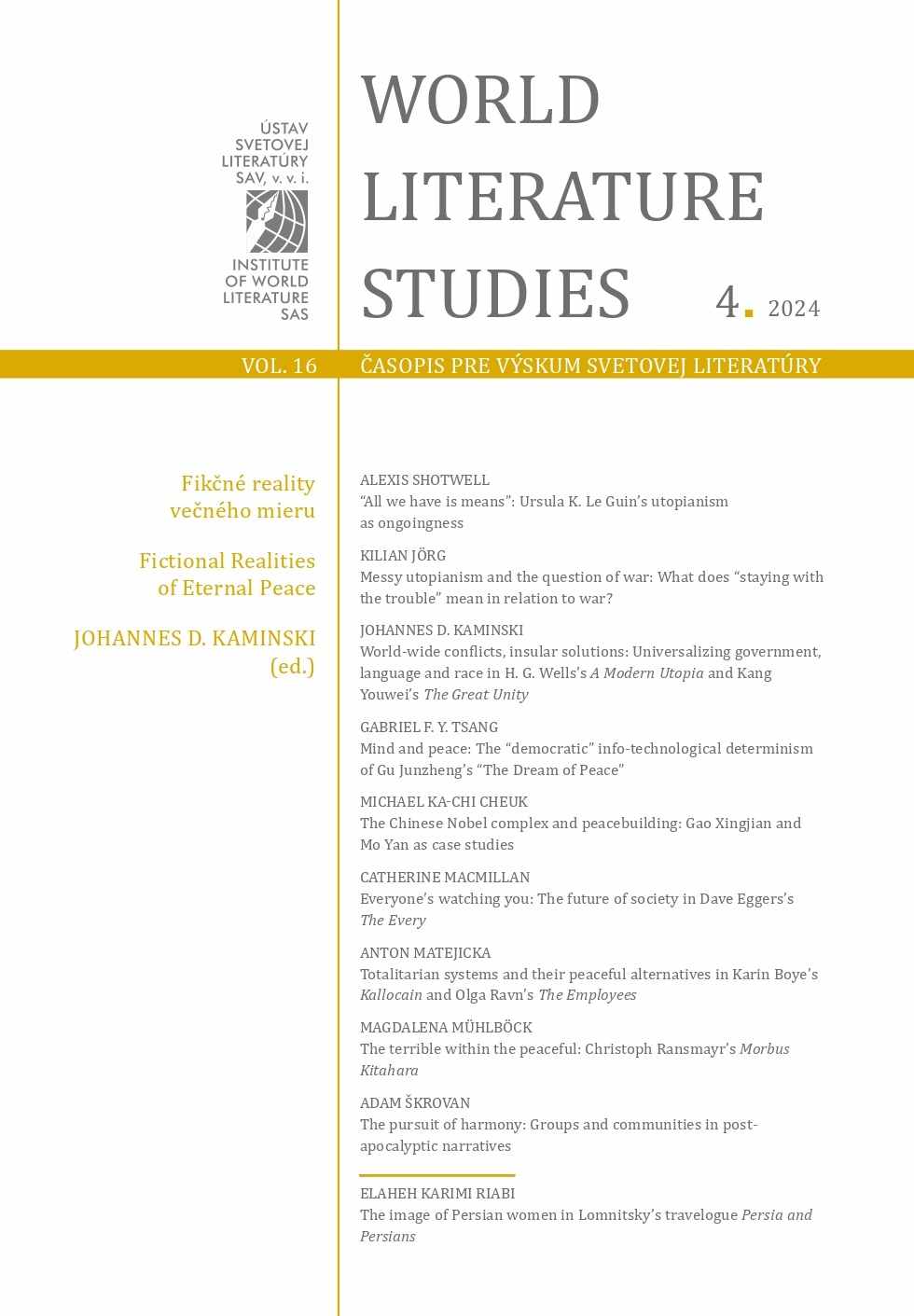
In H. G. Wells’ s and Kang Youwei’ s early 20th century utopias, World Governments take center stage by proposing global political orders to prevent large-scale wars. Both texts propose not only the centralization of military and juridical power, but also the homogenization of culture and language as well as race. Despite both texts’ ostentatious cosmopolitanism, however, their visions are compromised by their (Anglo- and Sinocentric) ethnocentrism and racism. In light of the complex narrative forms of both texts, this article proposes an alternative to judging them by today’s liberal values. Their sprawling form requires a consideration of their full heterogeneity, including Wells’ s use of narrative irony and Kang’ s intergalactic vision of cosmic citizenship.
More...
Gu Junzheng (1902–1980) published “The Dream of Peace” in 1939, adapted from Edmond Hamilton’s short story “The Conqueror’s Voice”. Junzheng’s tale is highly scientific and includes many technical terms and ideas. It corresponds to the May-Fourth legacy of emphasizing scientific precision for strengthening the nation, but trickily excludes China in the information warfare between the US and “Eastern-most Nation”. Taking “The Dream of Peace” as a both national and personal allegory that reflects the ideas of democracy, minzhu, and communism in relation to represented info-technological determinism, one can discover that Gu’s acceptance of techno-hierarchy, anti-concession, obscurantism, patriotic exclusionism, and absolute public control originated in his specific wish for peace rather than in democratic thought.
More...
This article analyzes the challenges faced by survivors within the unforgiving environments of fictional post-apocalyptic worlds as they seek refuge, better living conditions, and the possibility of rebuilding civil society. Grounded in an interdisciplinary framework that merges literary criticism with social contract theory – particularly drawing on the concept of the state of nature – the article examines how the apocalyptic event itself influences the ideology, goals, and behavior of communities of survivors. By focusing on the social dynamics and background of these groups in various post-apocalyptic works, the study elaborates on recent academic literature which highlights harmonious relationships in post-apocalyptic contexts.
More...